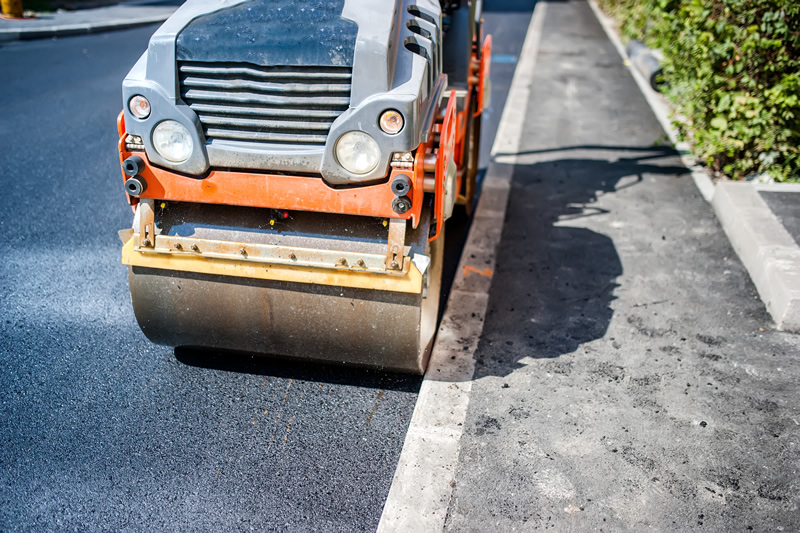The Basic Principles Of A1 Professional Asphalt & Sealing Llc
The Basic Principles Of A1 Professional Asphalt & Sealing Llc
Blog Article
A Biased View of A1 Professional Asphalt & Sealing Llc
Table of ContentsGet This Report about A1 Professional Asphalt & Sealing LlcA1 Professional Asphalt & Sealing Llc Things To Know Before You Get ThisLittle Known Questions About A1 Professional Asphalt & Sealing Llc.Things about A1 Professional Asphalt & Sealing LlcSome Known Questions About A1 Professional Asphalt & Sealing Llc.

The oil in an auto engine is not simply oil. The REOB includes all the additives that were in the waste oil as well as the wear metals from the engine (mainly iron and copper).
Nonetheless, by making lots of blends using different REOB samples and various asphalt binders, the variants largely can be balanced out. Several States supplied samples of recognized REOB structure to TFHRC researchers, who assessed the samples to contrast the percent of included (recognized) REOB to the found (examined) amount. The evaluations revealed an equivalent percent of added and discovered REOB.
Not known Details About A1 Professional Asphalt & Sealing Llc
They got an overwhelming feedback. The TFHRC scientists assessed 1,532 examples from 40 States, one Canadian district, and two Federal Lands Highway departments. They analyzed each example twiceamounting to greater than 3,000 analyses. None of those States recognized that the asphalt they were buying contained REOB. One State insisted its samples had no REOB.
Of the 1,532 examples examined, 12 percent included REOB, and some had significantly high levels of it at 1020 percent. The highest degree was 34 percent in a sample from Texas, which TxDOT had made use of in a patching compound. This screening likewise disclosed the presence of phosphoric acid in 11 percent of the examples, and 2 percent contained ground tire rubber.
Two years earlier at TRB's yearly conference, the Federal researchers held an REOB workshop and provided the findings of their research laboratory evaluations to a standing room-only crowd. Some agencies do not particularly ban REOB, they do impose physical tests that avert its useeffectively a restriction. Others do not outlaw it by spec, yet have arrangements with asphalt vendors to stay clear of using REOB
The Buzz on A1 Professional Asphalt & Sealing Llc
A handful do allow REOB, some within certain limitations. Ohio and Texas restriction levels to much less than 5 percent of the asphalt. To develop a reputable test method that all States can use, the TFHRC researchers established up a round-robin test strategy. The individuals are 11 State freeway agencies (Illinois, Massachusetts, Minnesota, Mississippi, Montana, North Carolina, Oklahoma, South Carolina, Texas, Vermont, and Wyoming), 2 independent testing laboratories, the Ministry of Transportation in Ontario, Queen's University in Ontario, and an Ontario paving professional.
In overall, the researchers prepared and delivered 720 blends. The individuals are evaluating the examples individually using the guidelines given by the TFHRC researchers. The article round-robin screening is almost finished, and TFHRC is in the procedure of gathering the outcomes. The result will be a suggested AASHTO test method that any kind of State can embrace and use (a-1 asphalt).
The pavement with REOB, which is located 0.6 mile (1 kilometer) from the pavement without REOB, has identical subgrade, web traffic thickness, and climate. Nonetheless, the section of Highway655 with 5 to 10 percent REOB revealed substantial fracturing. In this example, the existence of REOB was the identified source of splitting at a low temperatures.
"In our experience in Canada, also small quantities of 23 percent can be an issue." A section of examination sidewalk in Minnesota (MN1-4) located to include REOB also cracked too soon. The sidewalk executed well for the first 3 to 4 years, however after that started to split. This pavement is additionally based on reduced temperatures.
How A1 Professional Asphalt & Sealing Llc can Save You Time, Stress, and Money.
The tests were not substantial, however they showed that at degrees of 6 percent or even more, the tensile stamina of the asphalt dropped significantly. At a level of 3.5 percent REOB, the variation in the physical examination methods was greater than the result of REOB. Actually, it was challenging for researchers to evaluate whether REOB was existing.

One binder specification thought about is the distinction in between the low temperature level important requirements temperature for tightness (S) in the bending beam rheometer and the flexing light beam rheometer creep incline (m-value) noted as Tcritical. Two independent study groups, one from AASHTO and the other from the Asphalt Institute, ended that more study is required on the use of REOB in asphalt.
Previously, all asphalt testing determined engineering residential or commercial properties such as rigidity. These examinations do not show what materials had been included to the asphalt.

Everything about A1 Professional Asphalt & Sealing Llc
These outcomes show there are weak points in the standard engineering screening methods that might be made use of. The producer might have an economic benefit and the item passes all the standard examinations, however the item might not be beneficial to ensuring long-lasting efficiency. To resolve this issue and the development of new asphalt additives and extenders, TFHRC is beginning a study program to utilize portable spectroscopic gadgets, x-ray fluorescence spectroscopy, and Fourier transform infrared spectroscopy to make it possible for evaluations to be done in the field instead of having to take samples back to the lab.
Report this page